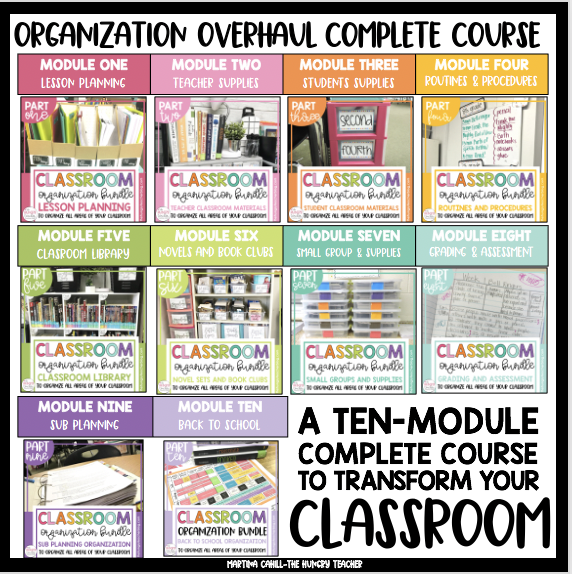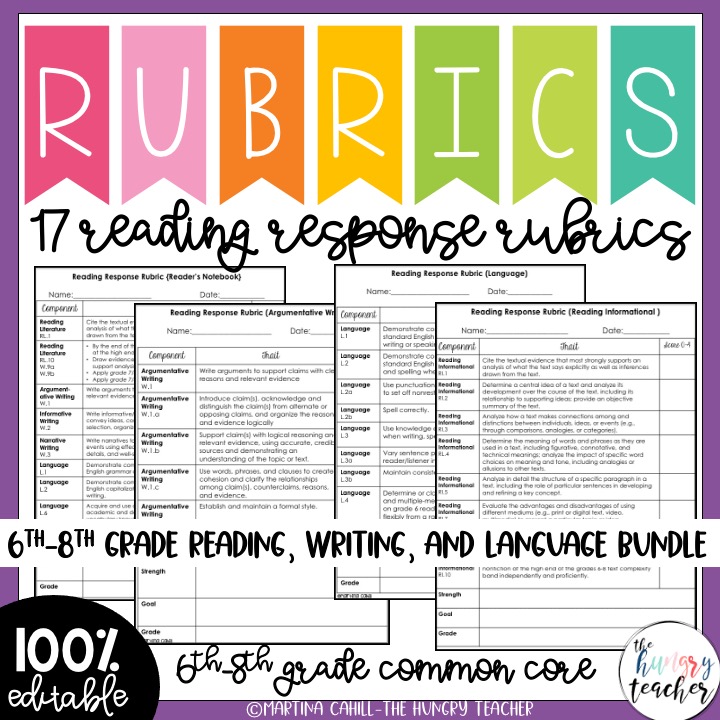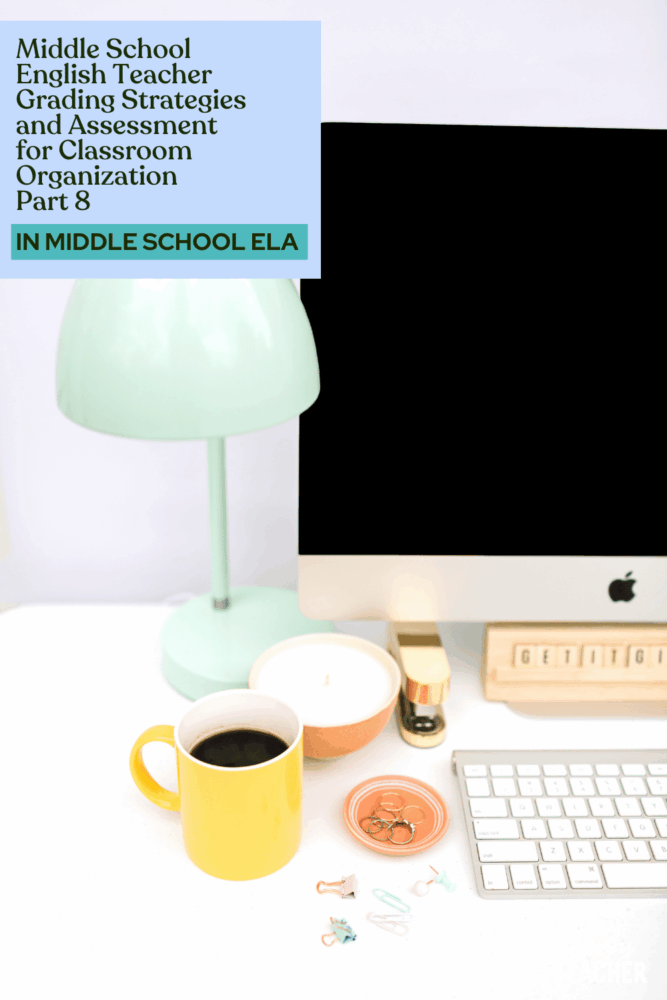hey friend!
I'm Martina.
I provide practical, time-saving strategies that actually work—so you can engage your students, teach effectively, and reclaim your time from the exhausting planning-grading cycle.
Browse Our ELA Resources
Middle School English Teacher Grading Strategies and Assessment for Classroom Organization | Part 8
This middle school English teacher grading strategies for upper elementary and middle school grading and assessment blog post is part of a classroom organization series. This is part eight of ten blog posts all about how I organize different areas of my classroom. Click on any of the links to be taken to each of the posts in the series:
- One: Lesson Planning and Lesson Materials Organization
- Two: Teacher Materials Organization
- Three: Student Materials Organization
- Four: Classroom Routines and Novels Organization
- Five: Classroom Library Organization
- Six: Book Clubs, Novel Sets, and Literature Circles
- Seven: Small Group Organization
- Eight: Grading and Assessment
- Nine: Long-Term and Short-Term Sub Planning
- Ten: Back to School Organization
CLICK HERE to get the Organization Overhaul Complete Classroom Course plus bonus resources for each module.
CLICK HERE to get the complete printable organization E-Book.

Get the Organization Overhaul Complete Classroom Course
GRADING IN DIFFERENT GRADE LEVELS
Like I have mentioned before, I have taught in a variety of settings, and because of that, I have used a variety of systems that helped keep my grading minimal. I definitely don’t think many teacher love grading, and if they do, they probably don’t love all grading.
These are the perfect systems for every type of grading, but I will show you some of my favorite English teacher grading strategies. I have implemented these in different settings and I hope to show you the ones that had the most effect on keeping my grading down
ELEMENTARY MATH GRADING
Now this isn’t one of my English teacher grading strategies, but I think it could be applied in many settings. This was the first system I ever put in place to help reduce the amount of grading I had. When I was in self-contained fifth grade, I obviously taught all the subjects. That being said, math grading was the area that seemed to be never-ending.
The reading and writing was a lot when I graded, but it wasn’t continual (i.e. every single day like math).
I will talk about reading and writing grading in self-contained classrooms and departmentalized classrooms later.
Plus, It’s been awhile since I have ever even taught fifth grade and math. That being said, if I ever taught math again I would 100% use this system
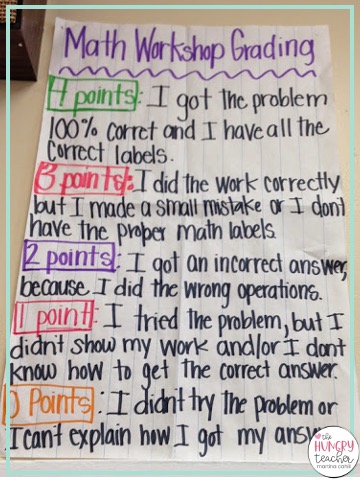
TRYING DIFFERENT MATH GRADING METHODS
I tried about 9 million different set-ups for math workshop, and so many things didn’t work for a variety of reasons. There were some things that were so effective that I could still effectively use them today if needed. One thing I LOVED was having my students grade their class work. It saved my sanity.
To give you an idea of my math workshop and how this works I will explain quickly.
My students and I did my Morning Math from 8:30-8:40 and then our math instruction from 8:40-9:00. Students then went to specials from 9:00-10:00.
When they come back from specials, they started on their math packets right away. This was my second favorite thing. I had to split my math block up my first year, a few weeks into the school year, because I was going crazy about my reading and writing schedule. I didn’t want to, but it ended up being the best thing ever. My second year I intentionally planned my math block to be broken up that same way.
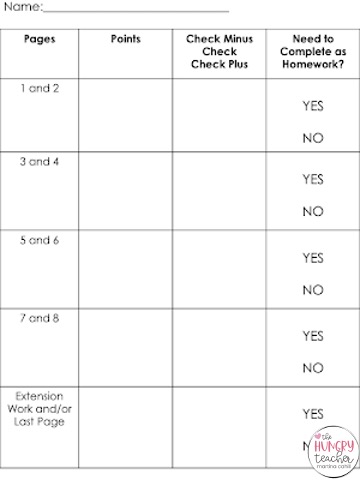
My students would came in from specials and get started right away. I didn’t have to say anything. They just knew what to do.
Anyway, the math packet was where the grading comes in. My students worked on a math packet every week. Usually two pages per day. It was mostly review with some current concepts mixed in. This set-up helped me, because most of the time students didn’t have to ask me 9,384,293,751 questions.
The cover of the packets looked like this image every week.
GRADING DAILY MATH PACKETS
My students worked on their packets while I was working with groups, helping other students, or trying to pull that same first group (just keeping it real here). I needed a way to hold them accountable while I was pulling groups.
While I worked with groups, I also had students play math games, play games on the computer, or do enrichment work. If they ever got done with something or were done with groups they went back to the math packets. It was kind of the home-base.
That was great in theory, but I noticed many of my students who I had play games first or who met with me would often say… “I didn’t finish because I met with you…” or “I played math games first.”
Sometimes this was the case and I planned accordingly, but some fifth graders were getting “too smart” for me and I needed an a way to track all this. When I was student teaching with Kelly Anne, from Appleslices, she suggested I try it. I liked it then, and realized I needed to go back.
We graded every single problem and they gave themselves a 0-4 on every problem. I could tell who was being dishonest and I just watched accordingly. It really was a non-issue because I kept the packets mostly review. They knew the expectations and my students were motivated to get all 4s so they could get a check plus.

COUNTING UP THEIR POINTS
After we graded, they had to count up all their points and then write their score in points. They then would write whether they got a check plus, check, or check minus on the covers of their packets.
We figured their points by the amount of problems. For example, if there were 20 problems, it was out of 80. I just gaged how hard the packet was, who was able to do a good job, and if most students missed a problem. For a normal day I would write something like the following on the board:
- 70-80 = check +
- 60-69 = check
- 0-59 = check –
If students got a check minus, they had to come see me and then we discussed what we needed to do for them to get at least a check.
The packets came to me at the end of the week and I did a quick check to put into the grade book. I had unlimited copies, so I made the packets, but I think this same idea could work with any type of math work, if students just had the math cover page, or if they just had a way to record for the week.
I think this could easily become one of your best English teacher grading strategies if you applied to grammar o reading quizzes.
MIDDLE SCHOOL ELA GRADING
If you’ve been following me for awhile then you know that I have had a kind of unconventional path in my teaching profession. I got my bachelor’s degree in K-6 elementary, thinking that sixth graders were terrifying. I thought that 6th grade was the oldest I would ever teach. Then I spent three years in fifth grade and one year in sixth. Eventually, from some crazy events, I ended up teaching middle school English Language Arts to seventh and eighth graders.
I LOVE middle school ELA. I obviously had to make some adjustments, but now I can’t see me doing anything else.
One of the biggest adjustments I had to learn quickly was how not to kill myself with grading. But I also still wanted to give 100 middle schoolers feedback on their work, specifically in writing. I have A LOT of tricks I’ve learned. I will talk about them, but there is ONE THING that you need to start doing if you want to have a life again. Ready for this?
GRADE ALMOST ALL OF THEIR WORK RIGHT THEN AND THERE IN CLASS.
This is one of the best English teacher grading strategies I have ever learned.
ENGLISH TEACHERS CAN DO THIS TOO
Yes, I’m still talking to you English teachers. It can be done.
Okay, so how do I do this?
I promise it’s actually not that hard, and yes I have pretty normal class sizes. I have six different classes of about 24 students, so in total I have about 150ish students.
It’s easiest to just give you a step-by-step of how it looks when I give an assignment and then grade it right there in class. Kind of like a script, if you will.
The following is a lot of steps of how it works in my classroom. I am hoping this gives you a good breakdown of how it works so that you can implement in your classroom.
I started a mini-version of this when I taught sixth grade kind of on accident, but it became a full-on implemented system when I got to middle school ELA.
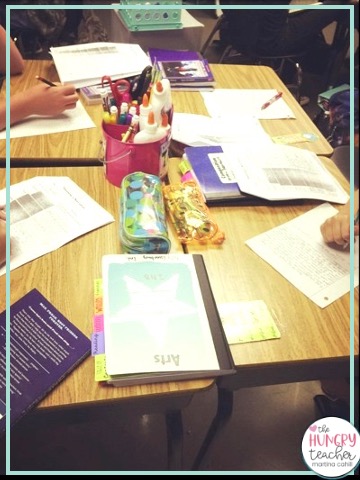
GIVING FEEDBACK IN CLASS
HOW TO GIVE FEEDBACK TO ALL YOUR STUDENTS IN ONE CLASS PERIOD
1. This works with almost any type of reading and reading response. Whether we have just done a read aloud, a whole class novel, they have just read a short story, a poem, an excerpt, books clubs, literature circles, whatever… this works. If they have read something, and you want to assess their writing and analysis/reading response, this strategy works.
2. After we have read, or students come to class having read the night before. I am looking to assess them on some type of literature or informational concept we’re learning. I am also giving them feedback on their writing and analysis of the text.
3. So I will say something like, “Write 3/4 of a page to 1 page about what themes you see (provide evidence) in this section of the novel (or in this short story or poem, etc.)
4. This is where you have to set it up so they can get it done and you can get them all graded in class.
5. I have a 65 minute class period (but I used to have 55 and still did this). In seventh grade I expect them to be able to write 3/4 of a page in twenty minutes. I expect at least one page from my eighth graders in this same amount of time.
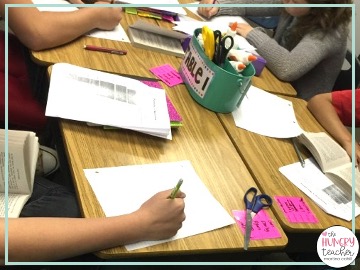
GIVING YOURSELF CUSHION TIME
6. BUT I do give them and myself some cushion time because we read for the last 15-20 minutes of every single one of my ELA class periods.
7. So I will say, “You have 20-25 minutes to write your response. When you are done, bring it up to me and I will grade it. If it is not acceptable, I will ask that you go back and adjust until it is. When you have been graded by me, then you may read silently.”
8. They have 20-25 minutes, but really, they have 35-40 because I am including that reading time. So if they don’t get done in the original time, or I send them back, it gives them that time to write and it also creates more time for me to grade.
9. Some students finish quality work in 10-15 minutes time. When they’re done, they come up to me and I grade it. The first students done are usually the strongest or the laziest writers (just keeping it real). I can quickly read the strong writers’ responses. Once you get good at it, you know to just look for them restating the question, their actual answer, and proof of evidence.
10. My lazier writers tend to be “done” quickly too, or at least think they’re done. These students often don’t have text evidence, because it requires too much effort, so I automatically look for it, then I tell them to go back and provide evidence for their answer. I have modeled how to do this, so they’re not blindly trying to figure it out, but if they still struggle, I ask other students if they’re willing to help them do it correctly.
11. Then students just slowly trickle up to me and form short lines to be graded
IMMEDIATE VERBAL FEEDBACK
Using this method, I can give them immediate feedback verbally:
Here are some of my most often used phrases. I do a lot of questioning as well to get them to try and figure out where they went wrong (especially in middle school because they REALLY need to be doing analysis almost all the time) and hopefully they go back and learn/fix it themselves:
- “Great use of textual evidence to support your theme.”
- “Love how you’re thinking beyond the text to determine the theme of this story.”
- “You did a great job of making it clear on how your evidence supports your answers for the themes of the text.”
- “Good job correctly citing the author and page number in MLA format.”
- “You need to go back and provide evidence. Look for something on pages ____ to help you support your answer.”
- “I see a lot of spelling and capitalization errors. Go back and fix those and then come up here and try again.”
- “What do you always need to do for book titles (short story titles, poems, etc.)? Go back and fix them and then try again.”
- “Remind me what theme means? Okay, so I think you need to go back and write more of a theme than a summary of the book. Look at what you wrote, and then see if you can write about a lesson we can learn from it.”
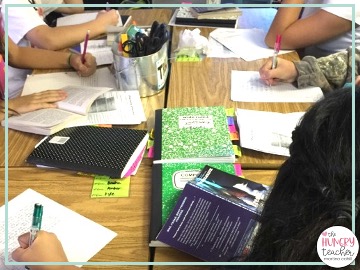
MAKING STUDENTS APPLY THE FEEDBACK
12. This feedback HAS TO BE USED IMMEDIATELY because they want the grade, so it’s win-win. They’re getting feedback from you and they’re ACTUALLY USING IT. WHAT!? While I am grading, I just have a clipboard with a class roster so I can make notes of students who are REALLY struggling. Then the next time we write, I go check with them first so I can get them started. Simple notes like, “spelling, capitalization, analysis vs. summary, evidence” let me know what they struggle with for next time.
13. When I grade, I grade one of two ways and most kids get As and Bs because I make them go back until it’s quality work. They HATE it, but it quickly teaches them to do it right the first time.
14. I simply just grade it for a simple grade out of twenty points or so. If they have all the components, then they get the full twenty and I just write 20/20 on the assignment. If they have to go back but make it quality they can still get an A. When they fix multiple times, but still just aren’t getting it, then it will be a 16/20 or 14/20. I just keep going until all students have been graded.
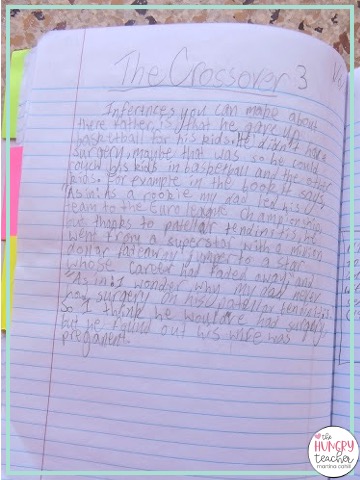
USING EDITABLE RUBRICS TO ASSESS
15. The other way I grade, is by using these editable rubrics. If I know we are going to do a response, I will just print a stack of them (sometimes I do two or four to a page and cut them) and grab one for each student as they come up.
I made them editable so that I can delete the rows or columns that I don’t want to assess that day. There are multiple rubrics included now because over the years I have made more and more based on what I’ve realized I’ve wanted to assess my students on.
Sometimes I want to just grade for text evidence. Other times I am looking for evidence, their ability to write argumentatively, and on spelling. I use the mixture rubric the most (pictured below, but sometimes I am very specific and use on of the other ones).
Depending on how many points I want the assignment to be worth, I will assign points for each category. Then I can quickly fill in how many they got on each section and give them a total points grade. I sometimes ask students to go write their strength and goal on the lines, or if I do take extra time to grade a response, I will write what their strengths and goals are.
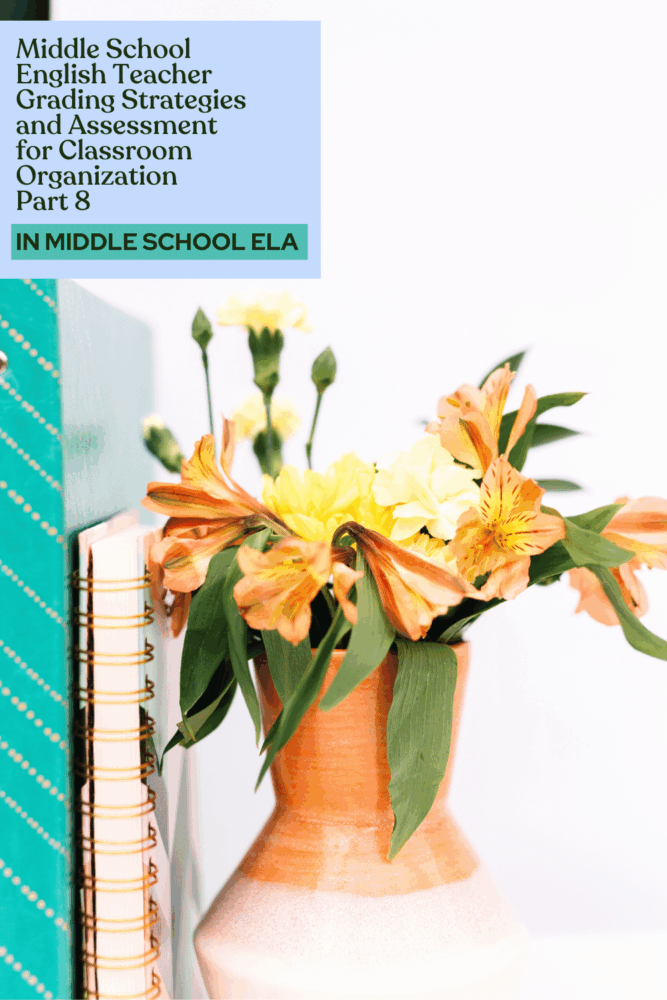
CHECK OUT THE EDITABLE RUBRICS
FREQUENTLY ASKED QUESTIONS
Here are some Frequently Asked Questions or scenarios I frequently deal with by using these middle school English teacher grading strategies:
QUESTION ONE
QUESTION: What about students who can’t write as much as you’re requiring during this time.
ANSWER: I obviously have students with IEPs where writing as much as I require in the time frame, is just not possible. I am flexible, and I give them more time, or shorten how much I expect, or grade for quality and not quantity. I’ve never had an issues with most of them finishing, unless they fall into the category I will answer in the next question.
QUESTION TWO
QUESTION: What about the kids who won’t write or who say stuff like, “Can’t I just get a C or D on it and be done?
ANSWER: I am known for being kind, accepting, and also showing my students what they are capable of. Many go beyond what they expect even of themselves. I am not however, known for tolerating laziness. I HATE IT. Some honestly sit there the whole time doing nothing, and then I tell them they have homework at the end of class, and I will check it tomorrow. They hate that because everyone else got done, and already has a grade for it.
Kids who are willing to take the “bad grade” so they can be done? #sorrynotsorry, it’s not happening. Again, I am known as the “easy class” but I think that’s solely based on the fact that I don’t give homework. They know I will make them go back 10 million times to make it quality. Watching everyone else get a grade and get to move on eventually frustrates them into just doing it right. When kids are capable, I will push them until they prove it.
QUESTION THREE
QUESTION: What do you do when you have a big line of kids waiting?
ANSWER: Easy! I make them write their name on the board (in order) and then tell them to go read while I grade. Then I just call them up as I get to them. That way we don’t waste time and they get more reading time!
QUESTION FOUR
QUESTION: What about kids who don’t finish?
ANSWER: It becomes homework. I have maybe one or two students per class period who I make do this. I always tell them, if they are working hard, but don’t finish, I will grade what they have (that helps high stress kids and perfectionists calm down). If they mess around, they have homework until it’s quality work.
WRITING CONFERENCES AS A GRADING TOOL
Writing Conferences is one of my English teacher grading strategies that I have had the most questions about during my last six years as a teacher. Mostly, I wondered how in the heck do teachers (especially middle school ELA teachers who have 100+ students) do conferences?!
In my first couple years of teaching it seemed literally impossible (and that was when I was self-contained in fifth grade with just 24 students).
I would always have these moments of, “Oh, this would be a good time to do conferences.” *Usually sometime in April or May when we finally figured out our routines and my students were independently working for a few minutes #sorrynotsorry.
I would get a few done, love it and think about how I was going to commit to doing it every day…. then the next day would be a hard lesson and too many kids needed help…. or we had an assembly that interrupted our writing workshop time…. or I would have other stuff that needed to get done during the time.
Even worse, I would sometimes have the time to do writing conferences, would pull a kid to do one, and then be like, “What the heck do we talk about?!”
You get the picture.
I just had such a hard time being consistent with it every single day and I didn’t really know what I was doing. To be clear, I’m still not that consistent and I still struggle a bit with how to help my really strong eighth grade writers, but I have finally figured out a system that works for me and actually allows me to get through anywhere from seven to ten students in 55 minute class periods, and it’s ACTUALLY HELPFUL AND USEFUL when I meet with the students.
MIDDLE SCHOOL WRITING EXPECTATIONS
I will also say that my first year in middle school English I was still figuring out what the expectations were for a middle school writer. When I would sit down to help a kid, I didn’t really know what a strong narrative, literary analysis, or rhetorical analysis should look like. That made it difficult for me to help my strong writers, in particular.
After a year of seeing really good and bad examples of each, I am WAY BETTER at giving all my students (no matter what their writing ability) actual guidance in the writing process. So give yourself some grace as you figure out your conference systems as well.
So this is how I do it. It may not be what all the fancy schmancy writing gurus recommend, but I think that writing conferences are super important and super helpful so I do what works for me to actually make me do writing conferences.
BINDER ORGANIZATION FOR GRADING
I made four different binders for each of my four ELA class periods. Then, I created a tab for each students and put writing conference forms behind each students’ tab so I could fill out their conference information as I went to them. All my binders on a bookshelf behind my horseshoe table.
I used to pull all my students to my horseshoe table for everything, but I am much more flexible with this now.
I try to teach a true mini-lesson. For narrative I created my own narrative unit. It’s pretty specific to how I teach narratives, but it is available in my TPT store. Essentially my lesson lasts 10-15 minutes, then the kids plan, draft, write, edit, or publish their writing for 30-40 minutes. During these 30-40 minutes is when I do conferences.
BEING FLEXIBLE WITH CONFERENCES
I use a variety of curriculums or resources to teach each writing unit, but I use the same class structure each time. I try REALLY hard to make my mini-lesson 10-15 minutes and then do conferences for 30-40 minutes.
Here is my biggest and best trick that I learned that helped me to start doing quality conferences and to use these English teacher grading strategies with my middle schoolers. This was all done during our 30-40 minutes of writing time: I don’t pull the kids, set a schedule, or tell myself how many conferences I can get through that day. It sets me up for failure and then I can’t keep motivated to do them day in and day out.
I simply take my binder for the class period, go to a student on my class roster, ask them if I can read their outline, draft, or final piece. Then write down as much as humanly possible on the forms below as I am reading.
They’re pretty simple but I am all about simple. I based them off of the rubrics that are used on our state testing tasks and common issues I need to address.
Our essays are mostly 3-5 pages so it doesn’t take me too long. This allows me to get to 6-10 students per class period.
MAKING CONFERENCES EFFECTIVE
To use these English teacher grading strategies, we don’t just sit and stare at teach other and they are actually productive conferences. And I can’t tell you how many kids ask, “Mrs. Cahill, can you read mine next?” Yes, 13 and 14 years olds can’t wait for me to read their writing. I think we forget that they love the one-on-one time with their teachers. Plus I always try to be very positive and helpful, so these conferences are just such a great community builder as well .
INDIVIDUAL WRITING CONFERENCES FORMS
After I read and write, it makes it SO MUCH EASIER than asking the kids, “What do you want to talk about in your writing?” or “What are you working on?” I know we can try to train them and prepare them for conferences, and when I was self-contained I really did try, but with 150 students and 55 minutes class periods, I want to be able to conference with each of my students at least once (but I shoot for twice) each writing unit.
After reading their writing, I think they think about their piece while I was reading and some of them come up with stuff to talk about because they notice it in that moment. Sometimes it’s as easy as, “I need to indent for my paragraphs.” or “My dialogue is boring and I need more sensory details.” Nine times out of ten, they’re right, I write down what they’re going to work on, and then go to the next student.
The conferences help me know what all my students might need help with for our mini-lessons and I can adjust (sometimes I even stop them in the middle of their writing time and do a short lesson on what I’m noticing)— i.e. for narratives, a lot of them still had really boring dialogue so they needed to work on only using dialogue that moved the story along.
MAKING GRADING SIGNIFICANTLY EASIER
These English teacher grading strategies also make grading infinitely easier because I already have an idea of where they are as individuals. I look at my notes while I grade their essays and I am able to help all of them along the way.
This way I don’t end up with a bunch of crappy essays, which we know are way harder to grade than the good ones. It also is so great for reminding me and them of their incredible growth in each unit.
In the examples I provided I tried to show you how I try to fill in as much as possible, because that helps me when I am grading essays. These English teacher grading strategies work best when you take a lot of notes while your’e working with your students.
This is just a zoomed in version of the writing conference forms so you can see the notes I take on each student.
This makes grading SO MUCH easier and faster when I start grading all the essays in my class.
free middle school guided reading forms sent
to your inbox
These forms are part of my Middle School Guided Reading Resource. Subscribe to The Hungry Teacher and get five of my middle school guided reading forms sent straight to your inbox. You’ll also get access to all of my exclusive freebies and teaching ideas.
QUICK GRADING BELL RINGERS
I have talked about bell ringers probably a million different times already, but it was for their routine piece. This is another one of my favorite English teacher grading strategies. When I made them I needed them for routine, but when I went to seventh and eighth grade, I was required to have two grades to input into my grade book each week. These are an easy grade every week.
This following page has an example from middle grade ELA Bell Ringers. I used them in fifth and sixth grade, while below is an image of what I use with my seventh and eight graders. My bell ringers are ELA based and I have used them in grades fifth through eighth. I created mine to have novelty, but also predictability every single week. It is also a weekly grade.
My goal with bell ringers or warm-ups is something that doesn’t waste time, they teach students something ELA based, and is meaningful to the students. I also didn’t want any copies or prep, because when I made them, I had basically no prep time, and very little copy amounts.
Mine are all pre-made, but there are tons of different ways you can do this to make it work for you and your students.
This middle school English teacher grading strategies for upper elementary and middle school grading and assessment blog post is part of a classroom organization series. This is part eight of ten blog posts all about how I organize different areas of my classroom. Click on any of the links to be taken to each of the posts in the series:
- One: Lesson Planning and Lesson Materials Organization
- Two: Teacher Materials Organization
- Three: Student Materials Organization
- Four: Classroom Routines and Novels Organization
- Five: Classroom Library Organization
- Six: Book Clubs, Novel Sets, and Literature Circles
- Seven: Small Group Organization
- Eight: Grading and Assessment
- Nine: Long-Term and Short-Term Sub Planning
- Ten: Back to School Organization
CLICK HERE to get the Organization Overhaul Complete Classroom Course plus bonus resources for each module.
CLICK HERE to get the complete printable organization E-Book.
Get the Organization Overhaul Complete Classroom Course
Want a sneak peek at teaching The Hungry Teacher way—with support, structure, and strategy?
When you join the waitlist for The Hungry Teacher’s Hub membership, you get three free classroom-ready resources: a theme unit, an expository writing unit, and a grammar unit introducing mentor sentences. Plus, you’ll get immediate access to a selection of exclusives from the Hub, including editable sub plans, pacing guides, and more.
No strings attached. Just resources you can use right now—and a heads-up when the Hub opens.
3 Free Middle School ELA Units—yours to keep!
JOIN THE WAITLIST + A FREE GIFT
Where to next, line leader?
Welcome to The Hungry Teacher! We create resources that are easy to use, practical, and get results. Teach with confidence—and make it home before dinner.
xo, the hungry teacher
